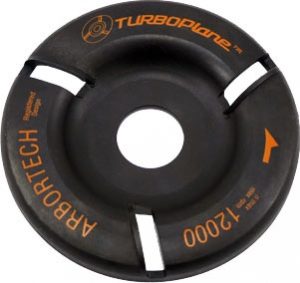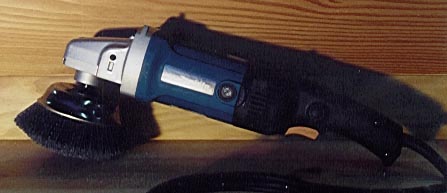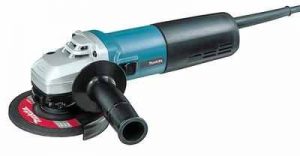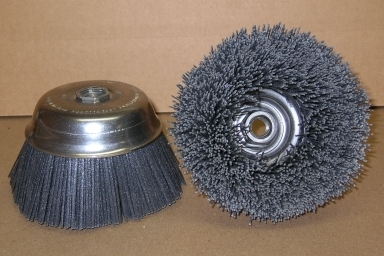Click here to read Restoration Part 1
In our last issue we reviewed the structural and other problems of an older log home in northwestern Oregon. In this issue we’ll discuss how we quantified and began the log restoration. There were three steps involved with this phase of the project:
Rough Assessment
Here we used graph paper an awl an electric drill with a small sized bit our knuckles, a ladder and a tape measure. The goal in this step was to take a rough inventory of the condition of the logs and the amount of rot involved and to determine a rough materials list for replacement.
Graph paper made it easier one wall at a time to sketch and label all the logs. We then rapped with our knuckles poked with the awl and used the drill to sample the logs so we could measure out the areas of concern. We shaded in or highlighted on the graph paper the areas that had some rot. After a while you can learn the difference in sound when you knock on spongy or punky and hollow areas in log.
When testing the logs with the awl or drill we tried to test from the underside of the logs whenever possible. This made the holes less visible and reduced the chance of rain getting into the wood. Pushing an awl into good sound wood is extremely difficult but when testing severely rotted wood the whole tool can sink in. This tool allows you to know how deep the rot goes in the log. You can determine if only the first layers of wood are spongy or if much more rot is involved. Many times the rot is located in the center of the log so when in doubt we used the drill with a narrow long bit. When the bit is removed from the wood you can assess the wood fibers that come out with the tool.
Sometimes it was obvious which logs needed to be replaced and which could be repaired but not always so this step allowed us to do only a rough assessment of the work ahead. Logs which had structurally failed (i.e. crushed) needed replacement as did logs with multiple rot areas that would have taken extensive repair. Aesthetics played a role too. Sometimes we chose to replace a log that could have just been repaired but was in a very visible area of the home. Even a good epoxy repair job will often be discernible. If possible try to avoid having this done near a main entry door etc. In some cases it was difficult to tell if a log had crossed the line from “repair” to “replace” and so it was marked as a “?” on the graph paper until the next step was completed.
In two walls extensive rot was found and we decided to replace all the logs in the wall instead of saving the one or two original logs that were still good. In these cases the savings in labor more than made up for the one or two logs that could have been salvaged. We tried to use this good wood in other areas however.
Since we had already determined that we were proceeding with the project we could have skipped this step and moved to Log Stripping and Final Assessment. However this step was valuable so we could start procuring materials while the Log Stripping was underway and we were also able to save labor by not stripping those logs we had already determined needed removed and replaced.
Many people use this step when viewing a log home that is for sale to determine if they want to buy the house and if so how much the repairs (if any) will cost. A thorough inspection including this step can save the potential homeowner thousands of dollars.
Log Stripping
For a restoration project like ours involving the whole house we decided to do our final inventory after we had stripped all the paint off the house. If your project has no paint or finish or all the finish has already worn off you could probably take your repair/replacement inventory from the start. There may be a few logs that don’t respond well to stripping that move from “repair” to “replace” but your inventory will be fairly accurate. We had flaking peeling paint to contend with so we couldn’t see the logs’ surface. For reasons why you shouldn’t use paint on your logs please see Restoration Part 1.
We used a variety of methods to strip the old paint off the logs: water, chemical, corn cob and sanding. All of these worked to varying degrees but we used them all in different test areas.
Water —
Using a pressure washer with a Roto Max nozzle and 15 degree fan nozzle we stripped one wall with this method. The Roto Max nozzle directed the water in rotating circles which is easier on the wood surface than a concentrated single point. The fan nozzle is gentler to the wood but is slightly less efficient than the Roto Max nozzle. This method worked very well on the good sound logs and left a beautiful smooth finish but it could splinter the surface of the logs that were slightly punky.
Chemical —
We tested several stain & paint strippers but given the speed and cost of several of the other methods we decided against doing a large area of the home with this method. Many strippers & cleaners for gray weathered wood and/or failing finish can be cost and labor effective but please test a small area of your project first.
Corn Cob —
Corn Cob Blasting is similar to sand blasting but is much safer for you and your wood. People who do a lot of sand blasting often suffer from serious lung irritations and the “sand” can be very abrasive to wood– ground up corn cob is much softer and does not have the type of dust (as “sand”) that is dangerous to your lungs.
This method uses a modified sand pot to accommodate the ground up corn cob media. Corn cob media comes in a range of grit sizes and the larger the grit the more abrasive it will be. We found that we needed two grit sizes depending on the paint adhesion. Both Sashco and Perma-Chink have corn cob blasters but Sashco’s has a fan shaped nozzle instead of a round one. This fan shaped nozzle allows you to get very close to door and window openings.
This method works very well for removing film forming paints and finishes but we found in additional testing that it is not very efficient in removing penetrating finishes or on bare gray weathered wood. It will work in these circumstances but it takes longer you have to use more corn cob media and it is therefore tougher on the wood. To achieve the smoothness we wanted we quickly ran a sander 
Although many people who do corn cob blasting just wear sunglasses T-shirts and shorts we strongly suggest proper eye nose/mouth and ear protection, long pants and a long-sleeved shirt.
Sanding —
We used a combination of
You can experiment to see what grits work best in your situation but we generally used 36-80 grit pads on the angle grinders and 80-120 grit pads on the random orbital sander. The angle grinder removes paint and finishes quickly but can leave ugly circular marks. That is why we followed this tool with the random orbital sander. For cleaning in notches and tight areas we used a Fein sander. A Fein sander has a small oscillating triangular sanding surface. This can also be accomplished with a Turboplane Blade and/or an Osborn Buffing Brush
The beauty of this method was that you could start and take breaks without having to worry about running up costly rental equipment bills (as long as you own the sanders); prep and tear down times are minimal; there are no chemicals to worry about getting into a nearby waterway (not an issue for our location) and you didn’t have to worry about water or corn cob grit coming through the walls.
Final Assesment
This step is just a review and refinement of the Rough Assessment and from this list you can procure all the materials (logs and wood epoxies) you will need. We didn’t run into too many surprises after doing the log stripping but we were able to better judge the logs marked with a question mark on our graph paper. Several logs moved from “repair” to “replace”. Please keep in mind however that with any restoration job you may find more rot and problems as you start repairing and replacing logs.
Head to Part 3: removing logs from a wall replacing logs and repairing logs.









